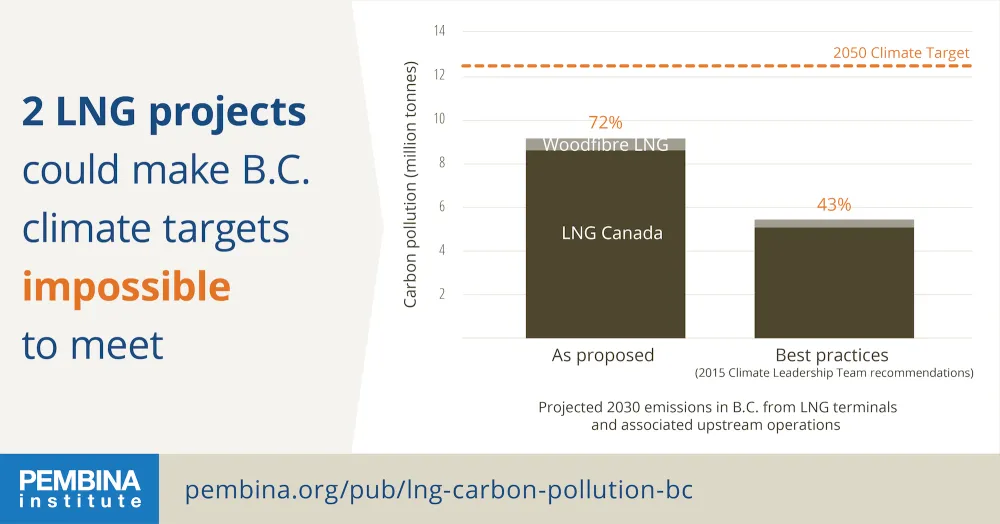VANCOUVER / COAST SALISH TERRITORY — Karen Tam Wu, acting B.C. director at the Pembina Institute and a member of B.C.’s Climate Solutions and Clean Growth Advisory Council, made the following statement today in response to Premier John Horgan’s announcement of a new fiscal framework for natural gas development:
“Today, Premier John Horgan said climate action is a high priority for his government, yet the framework he announced focuses on attracting new fossil fuel investment and falls short of demonstrating how LNG might fit within a plan to meet B.C.’s climate commitments. The government has pledged to develop both a climate strategy to get B.C. back on track to meeting our climate targets, and an energy road map with the aim of transitioning to a low-carbon economy. It’s not clear how the framework will ensure any LNG development is compatible with these two goals.
“The government is now promising LNG development can proceed and we can meet our 2030 and 2050 climate targets. Questions remain regarding how the carbon pollution associated with proposed LNG projects will fit within the province’s carbon budget. Major LNG development would require significant emissions reductions in the gas supply chain, and an increase in the scale of emissions reductions needed in other sectors of the economy.
“Although the government has consistently reiterated its commitment to B.C.’s climate targets, the announcement did not explain how the gas sector will be required to reduce its carbon pollution — despite the fact that large opportunities to reduce emissions across the B.C. gas supply chain exist. The premier mentioned reductions in other parts of the economy, such as transportation, yet no specific measures have been announced. We look forward to seeing a new suite of measures introduced and implemented to reduce carbon pollution across all economic sectors — otherwise we risk missing our climate targets and passing up the benefits of clean growth.”
Quick facts
- B.C.’s climate targets for 2030 and 2050 are 39 million tonnes (Mt) and 13 Mt of carbon pollution per year, respectively.
- Carbon pollution from LNG Canada and associated upstream development would total 8.6 Mt (3.6 Mt at the terminal, 5.0 Mt from upstream) per year in 2030.
- At 12 Mt, the gas sector accounts for almost half of the annual carbon pollution from B.C. industry.
[30]
Join the conversation on Twitter: @Pembina
Contact
Stephen Hui
Communications Lead, Pembina Institute
778-987-7654
stephenh@pembina.org
Tw: @StephenHui
Background
Letter to the editor: LNG development defeats B.C. carbon pollution goals
Backgrounder: Liquefied Natural Gas, Carbon Pollution, and British Columbia in 2017
Op-ed: 3 things to know about B.C. LNG in 2017
Op-ed: Six troubling subsidies that support B.C.’s LNG industry
About the Pembina Institute
The Pembina Institute is a non-profit think-tank that advocates for strong, effective policies to support Canada’s clean energy transition. We have offices in Vancouver, Calgary, Edmonton, Toronto, and Ottawa. Learn more: www.pembina.org




